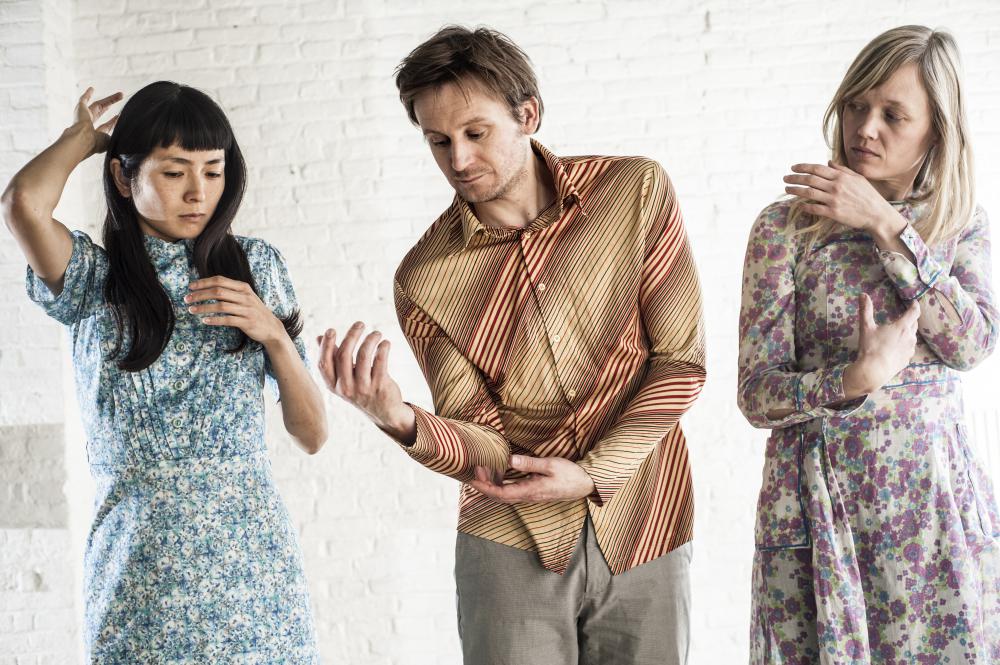
In 2015 approximately 50 million people will suffer from a form of dementia. This is an incredible number of people who will forget where they left their keys, how to put one foot in front of the other or who the people are whom they love. Add to this number all those around these sufferers – family and friends who are extremely worried, and help as well as they can, but who are above all afraid of being forgotten – and you can understand why dementia is one of the most important social and health crises of the 21st century.
The choreographer Ugo Dehaes has been working on themes from his immediate surroundings for many years. When he saw how someone he loved was starting to ail in his brain and body, and how the family reacted with great distress, he felt he had to seek out the beauty of forgetting and the inability to control one’s own movements. In earlier work, Ugo Dehaes has successfully dealt with a number of social phenomena – the way couples spend their lives together, what happens to older dancers, how to make contemporary dance with young children. In 2015 he is creating and himself dancing in DMNT, a piece for three dancers in which he will examine the physical and social impact of dementia.
Method – inspiration
To assemble the movement material for DMNT, Ugo and the other dancers are interpreting what goes on in the minds of dementia-sufferers. They show the alternation of lucidity and utter confusion by means of complex patterns and unusual movements. At certain moments particular movements are missing, or else the dance comes to a complete standstill, before again breaking out very violently and physically, just as when the brain tries compulsively to make sense of all the chaos it is experiencing. With our own bodies, which are quite young, we too try to experience how it feels to lose control over the body.
Another source of inspiration is the ‘Dancing Plague’, a mysterious phenomenon that is closely related to neurological illnesses: in 16th-century Europe large groups of people began dancing spontaneously, but also uncontrollably. For lack of a remedy, musicians were hired and many of the people danced until they literally dropped dead. This inspires us to create exuberant dance that is completely unrestrained. The pure pleasure of dancing.
As a group we seek the various social reactions to dementia: from help and support, through denial to surrender and abandonment. How do you deal with someone whom you love but who no longer recognises you? At what point do you consider a demented person to be a hopeless write-off?
Stage design
The stage design consists of just one single element: a piece of a big wooden wing from a glider. In the beginning it hangs high above the stage and revolves slowly around its axis. In the course of the performance it is slowly lowered until it almost touches the floor. While high in the air, the sculpture casts harsh shadows, and when it comes down to human height the dancers have to avoid it and duck under it, and it divides the space literally into two areas, acting as a wall between the dancers.
This design was actually already created ten years ago for a theatre project that was never carried out. The sculpture was lost from sight and forgotten. For DMNT, Ugo went looking for the original designer and asked him to create this object once again: the revolving wing symbolises time, and when high in the air it casts shadows that make us think of memory loss. The large object that descends is like something ominous coming towards us, and once it has descended fully it is an extra element that makes the dance more difficult and distorts it.

© Marco Mertens
Choreography: Ugo Dehaes in collaboration with the dancers
Dance: Kayoko Minami, Ugo Dehaes, Charlotte Vanden Eynde
Music: Roeland Luyten
Lights: Arne Lievens
Stage-design: Pieter Eycken
Dramaturgy: Peggy Olislaegers
Production: kwaad bloed
Coproduction: TAKT, Dommelhof
Distribution: Vincent Company
With the support of: Vlaamse Gemeenschap and Vlaamse Gemeenschapscommissie
Thanks to: Campo, Gent